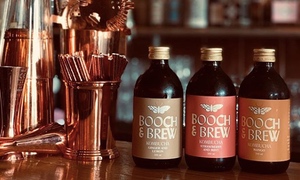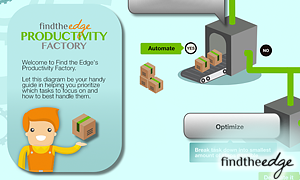 I love my ‘Alaska Airlines Mileage Plan' membership. Miles are easy to accumulate and redeem, and as a frequent traveller between Seattle and the San Francisco Bay Area, the programme has certainly influenced my choice of airlines.
I love my ‘Alaska Airlines Mileage Plan' membership. Miles are easy to accumulate and redeem, and as a frequent traveller between Seattle and the San Francisco Bay Area, the programme has certainly influenced my choice of airlines.
I’m also a big ‘My Starbucks Rewards'fan, and by most measures this programme has been a success. Adam Brotman, Starbucks chief digital officer, indicates that the programme continues to resonate with customers, driving increased revenue, traffic and purchases, and further differentiating Starbucks from competitors.
Yes, I am a fan of rewards/points programmes. But when I’m asked to help companies increase customer loyalty and lifetime value, rewards programmes are rarely part of the conversation. When they are, it’s usually as a low priority.
The reason? There are many things that impact customer attitudes and behaviour, and rewards programmes frequently don’t stack up well compared to other factors that deliver on your company’s value proposition.
Let’s review some of the reasons this is true:
If you have a loyalty “problem,” you have bigger fish to fry
Regardless of how you measure customer loyalty and lifetime value, if customer churn is a cause of significant concern, then your company needs to fix the core value proposition first.
I have nothing against bulldogs, but I know that lipstick doesn’t really change their looks. Fully understand your situation, and create and execute on a broader LOYALTY STRATEGY first.
You can’t do everything
When rewards programmes are done well, they require an on-going product management and marketing effort that basically, replicates all the functions needed to take a product to market.
In addition, rewards programmes have the added challenge of unique legal and financial liabilities, which demand a significant amount of executive attention.
Does your organisation have the resources, mind share, and production capacity to execute a fundamental loyalty strategy AND a rewards programme?
Customers only have so much capacity
According to the 2013 Maritz Loyalty Report: US Edition, the average consumer is enrolled in 7.4 loyalty programmes.
While it’s clear that consumers like the concept, only 63% are active in their membership, and only about half (46%) modify the brands they buy to maximise the points they receive for purchases.
In this crowded space, assume that rewards programme success will require a very well designed programme AND a brilliantly executed communication strategy, i.e. generate awareness, interest, desire and action.
Rewards programmes are inherently difficult
Is the execution of your current go-to-market strategy delivering tremendous value and yielding significant loyalty?
If not, introducing a new service tier is likely to be a tremendous stretch for your team.
One of the greatest rewards programme challenges is that participants are very demanding. The Maritz study tells us that the five key functional drivers of programme satisfaction are:
- Meets their needs
- Ease of redeeming rewards
- Quality of rewards available
- Total earning potential
- Number of ways to earn points
The implication is that you have to perform at a high level to be effective. The energy required to do it right could be better served by focusing on the satisfaction drivers of your core value proposition – the products and services you already offer!
If your strategy includes ‘breakage' then your strategy is broken
A common catch-22 of rewards programmes is that sometimes they work too well in terms of driving behaviour. And, when that behaviour includes point redemption, it can frequently create significant expenses for your business.
If your Finance Team only likes your programme when a large share of participants don't receive rewards, can you really expect your programme to yield loyal customers?
Loyalty is about behaviour AND attitude, and we learned in the Maritz study that participants will be unhappy if they don’t get their rewards.
Rewards programmes are very hard to measure
A few years ago I worked with a large Broadband provider implementing a targeted, national rewards programme.
While the focused, and well executed programme appeared to yield a significant positive return, it was subject to extensive monthly reviews by the Finance Team, who were never quite comfortable with the metrics.
When the company was sold, the buyer immediately terminated this award-winning programme. The bottom line is that rewards programmes tend to be expensive, and success can be difficult to define and measure. If rewards are a hard sell to your Finance Team, it’s probably the wrong marketing strategy.
Points and rewards programmes have been around for many years, and a successful industry has been formed to support this marketing lever.
Many firms have been successful with this tactic and, of course, many consumers are happy to participate.
But, as you evaluate your business results and consider ways to increase customer lifetime value, ensure that your foundation is established with a successful, comprehensive loyalty strategy.
Once that’s in place you’ll enjoy a much greater return from a rewards programme.





